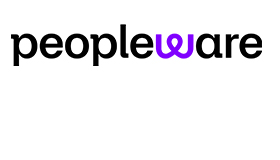Chris Dealy of injixo discusses how these 15 habits of a successful workforce manager can improve your forecasts.
Some planners always seem to be in control of the situation while others frequently struggle with inaccurate forecasts, inefficient schedules and unexpected intraday issues that put service levels under pressure.
However, the personality of the planner plays only a minor role. More important are the daily habits that a planner does or doesn’t cultivate.
In this blog post you’ll learn about 15 key habits that will make your life as a planner easier and more successful.
1. Regularly checking the data basis for the planning process in the contact centre
Data is the starting point and the basis for the whole planning process. If the data is incorrect or incomplete, the forecast and the schedules will also be incorrect. Therefore, you should take a look at your data sources from time to time and make sure that the data is complete and error-free.
A common source of error is, for example, the incorrect use of agent status which agents activate when they move from one job to another, e.g. from the “In Conversation” to the “After Call Work” status. Also make sure you understand exactly what kind of data you have in front of you before you use it for your forecast.
2. Using flexible planning options for scheduling
Set up a number of options to make your planning as flexible as possible to meet the forecast workload demands. For example, you can vary the start and end times of shifts or adjust the shift length for agents. Breaks can be distributed individually as well to ensure agents are available when demand increases.
Additional agent activities such as training, coaching and meetings can often be scheduled in advance to optimally support the staffing plan. To make this work, it is essential to talk with the responsible people early enough.
3. Considering shrinkage when calculating agent requirements
It is indispensable to consider shrinkage to create a reliable prediction of the required agents. Shrinkage is the percentage of time that agents spend on unproductive activities such as breaks, meetings, coaching, holidays and sick leave. Shrinkage in contact centres typically amounts to 25% to 35% of weekly working hours. Shrinkage should therefore be regularly measured and included in planning.
4. Getting aligned with other departments
Make sure that you are abreast of what is going on in other departments to avoid nasty surprises like unplanned marketing campaigns or price increases, which will trigger changes in contact patterns. Make sure you are copied in on all relevant communications and make a point of attending meetings which have the potential to impact planning metrics like service level.
5. Keeping an eye on the daily figures and KPIs in your contact centre
Check forecast accuracy throughout the day, comparing actual volume and average handling time (AHT) with your forecast. It is rare that variance between forecast and actual is limited to one or two intervals, so the sooner you detect deviations from the forecast and take corrective action, the better. Forewarned is forearmed.
6. Reacting quickly and appropriately to intraday issues
Know which levers to pull when the brown stuff hits the fan – and pull them quickly. You could be faced with an unexpected spike, agent no-shows due to illness or weather, or unplanned technical issues. If the perturbation is relatively minor, surgical adjustments of a few agent shifts will fix coverage issues. If you have agents who can be called in at short notice on days off, that’s a good option.
If the problem is more severe, the next step is to re-optimise breaks across a group of agents to provide a consistent level of service over the day. Then you should look at reassigning activities to balance out coverage across different lines of business. And despite its bad reputation, overtime is not intrinsically evil; when used in moderation, it can be very effective in hitting service level goals with minimal disruption.
Try not to be seduced into cancelling training and one-to-ones; this may appear to offer an easy solution to tactical problems, but by skipping coaching and development, you are storing up problems for the future.
7. Offering time off at short notice
If you find yourself overstaffed, offer time off to underutilised agents at short notice. Some agents find this motivational and it helps you build up a balance of extra hours for those days when you are understaffed.
8. Processing holiday and shift swap requests quickly
Take care of holiday and shift swap requests before a backlog builds up. Getting a quick decision is good for agent morale. And spending a few minutes once a day is much less disruptive than spending an hour once a week.
9. Informing stakeholders proactively to avoid ad hoc interruptions
Interruptions are the thief of time, so avoid them by regularly delivering succinct planning performance information to stakeholders such as senior management, HR and team leaders. You will delight your internal customers by providing timely and accurate management information (MI).
It is much better to create MI at a time that suits you than to find yourself on the back foot when someone asks for a report just when you’re struggling to keep all the plates spinning on a busy day.
10. Engaging with the front line
Listen to frontline employees on a regular basis to get feedback on their schedules, how they are accessed, the holiday and shift swap process and other planning-related topics.
There is an argument that agents are simply there to do a job and they should just work the shifts they are given. But let’s not forget that happy staff are productive and motivated staff, so you overlook agent morale at your peril. Staff turnover has a real impact on the bottom line, since it typically costs thousands to hire and train a new starter.
11. Making time for learning
Read relevant books, subscribe to helpful blogs, use e-learning, join relevant LinkedIn groups and the conversations you will find there. Attend relevant conferences and take advantage of the learning opportunities provided by your WFM vendor. Time management is a particularly useful skill for planners, so set time aside for personal development to make sure that you stay at the top of your game.
12. Learning from mistakes
Take a note of those days when forecast accuracy was bad, you were seriously understaffed or service level took a hit. Identify the reasons why and the steps you took to correct the situation. Things do go wrong and mistakes are made; there is no shame in that. Good planners make sure that they don’t make the same mistake twice.
13. Testing critical changes in time to find and fix problems
Just-in-time delivery is proven to maximise efficiency in industries ranging from car manufacture to retail distribution to software development. But it should only be used in a business-as-usual context.
When making changes to Human Resources (HR) (e.g. updated contract terms), technology (e.g. scheduling software) or processes (e.g. holiday approvals), the planner who leaves plenty of time for testing is the one who will succeed. A day spent on finding and fixing problems before going live will save a week of headaches afterwards.
14. Ensuring a balance of stakeholder interests in the contact centre
The three key interest groups in the contact centre are customers, agents and contact centre management. Customers want good service, short wait times and a high first contact resolution rate. Agents want their shift preferences to be taken into account and manageable workloads. The management wants to increase revenue and effectiveness (e.g. by low abandon rates) and keep costs as low as possible.
Your work as a planner impacts all those areas. Use your position to balance the interests of all stakeholder groups.
15. Making use of the right technologies to plan smarter and make your life easier

Chris Dealy
There are still some contact centres that rely on spreadsheets for planning, but the majority are using professional WFM tools. And for a good reason.
For contact centres of all sizes, WFM software has become indispensable to streamline, automate and improve daily planning processes in forecasting, scheduling and real-time management.
This blog post has been re-published by kind permission of Peopleware – View the Original Article
For more information about Peopleware - visit the Peopleware Website
Call Centre Helper is not responsible for the content of these guest blog posts. The opinions expressed in this article are those of the author, and do not necessarily reflect those of Call Centre Helper.
Author: Peopleware
Published On: 9th May 2019 - Last modified: 17th Jun 2024
Read more about - Guest Blogs, Chris Dealy, Peopleware






 Peopleware is a leading workforce management (WFM) solution, trusted by over 500,000 users in 30+ countries. With smart forecasting, automated scheduling and real-time management, organizations can optimize workforce efficiency and keep work aligned with demand. From precise time tracking to flexible planning, Peopleware helps organizations boost operational efficiency and foster a more engaged, productive workforce.
Peopleware is a leading workforce management (WFM) solution, trusted by over 500,000 users in 30+ countries. With smart forecasting, automated scheduling and real-time management, organizations can optimize workforce efficiency and keep work aligned with demand. From precise time tracking to flexible planning, Peopleware helps organizations boost operational efficiency and foster a more engaged, productive workforce. 































